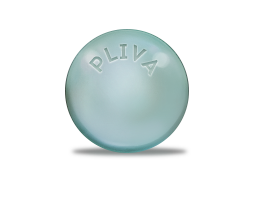Abilify is designed for patients with diagnosis named schizophrenia. It is used either during the exacerbation period or for maintenance treatment. Abilify is also prescribed in cases of an acute manic episodes of type 1 in manic-depressive psychosis, and as a supportive treatment for bipolar affective disorders. Abilify can be used as an additional treatment during depressive disorders. According to some experts, the drug can be used in order to treat alcoholism.

Aciphex - the medicine, normalizing acidity of a stomach, inhibitor of a proton pomp. It is prescribed at gastroduodenal ulcer in the exacerbation phase, gastroesophageal reflux disease; states which are characterized by pathological hyper secretion including Zollinger-Ellison syndrome. In combination with bactericide - Helicobacter pylori eradication at patients with gastric ulcer or chronic gastritis; treatment and prevention of recurrence of an ulcer at patients with gastric ulcer related to Helicobacter pylori.

Albenza - anthelmintic agent which is active concerning adult individuals and larval forms. Albendazole influences polymerization of β-tubulin, which stops it. As a result, occurs violation of formation of microtubules in intestines of helminths, the ability of vermis to acquire glucose is suppressed. It is blocked the normal intracellular migration of organellas, and it is prevented the synthesis of ATP in their muscular tissue. Creation of therapeutic concentration of albendaloze leads to death of helminths. Medicine causes death of nematodes (Necator americanus, Strongyloides stercoralis, Enterobius vermicularis, Trichuris trichiura, Ascaris lumbricoides, Cutaneous Larva Migrans, Ancylostoma duodenale), cestode (pig, bull and dwarf tapeworm), trematode (Clonorchis sinensis, Opisthorchis viverrini), elementary (Lamblia).

Amoxil - is a semi-synthetic aminopenicillin antibiotic of broad spectrum effects for oral administration. Suppresses the synthesis of the cell wall of the following bacteria: Corynebacteriumdiphtheriae, Enterococcus faecalis, Listeria monocytogenes, Streptococcus agalactiae, Streptococcus bovis, Streptococcus pyogenes; Helicobacter pylori; Peptostreptococcus; Borrelia.

Aricept, which is donepezil - is prescribed at dementia which occured due to Alzheimer disease (mild and moderate severity) at adults, including elderly people (symptomatic treatment). Medicine works through inhibition in acetylcholinesterase of brain.

Bactrim - a combined drug, containing two active ingredients: sulfanamide drug sulfamethoxazole and derivative of diaminopyrimidine - trimethoprimum. Colibacillus life activity oppresses that leads to reduction of synthesis of thymine, riboflavinum, niacin, etc. group B vitamins in intestines. Duration of therapeutic effect makes 7 years.

Cefadroxil - cephalosporin antibiotic of the I generation for intake. It works as bactericidal, breaking synthesis of a cell wall of microorganisms. It has a broad spectrum of activity: it is active in relation as gram-positive (Staphylococcus spp. which don't produce and produce a penicillinase; Streptococcus spp. (including Streptococcus pneumoniae), Corynebacterium diphtheriae, Bacillus anthracis), and gram-negative microorganisms (Shigella spp., Salmonella spp., Escherichia coli, Haemophilus influenzae, Klebsiella spp., some strains of Proteus spp., especially Proteus mirabilis), Moraxella catarrhalis (Branhamella). Many strains of Enterococcus faecalis and Enterococcus faecium are steady against Cefadroxil.

Celexa - antidepressant. Brings energy, stops feeling of alarm, reduces sensation of fear and tension, eliminates dysphoria, reduces persuasive feelings, practically does not cause sedation. The lasting clinical effect develops in 7-10 days of regular reception. The mechanism of action is connected with selective blockade of the return neuronal serotonin reuptake in synapses of neurons of CNS with a minimum effect concerning reuptake of noradrenaline and dopamine.

Cilostazol - reversibly oppresses aggregation of thrombocytes caused by various incentives, surpassing in this respect Аspirin, Dipiridamolum, Тiclopidine and Pentoxifylline. It also inhibits formation of arterial blood clots and proliferation of smooth muscle cells, possesses vasodilating action.

Danazol is used in endometriosis (with concomitant infertility), benign neoplasms of the breast (fibrocystic mastopathy), primary menorrhagia, premenstrual syndrome, primary premature puberty, gynecomastia.

Diamox weak diuretic which is taken at edematous syndrome, craniocereberal hypertensia, glaucoma, epilepsy and mountain disease. Inhibits carbonic anhydrase in a proximal gyrose tubule of nephron, increases removal with urine Na+, K+, hydrocarbonate, does not influence Cl- egestion, alkalinizes urine.

Diflucan - antifungal medicine, possesses highly specific action, inhibiting activity of enzymes of fungus. It is taken at systemic lesions caused by fungus including meningitis, sepsis, infections of lungs and skin as at patients with a normal immune response, and at patients with various forms of immunosuppression.

Flagyl - antiprotozoan and antimicrobic drug. It is prescribed at treatment of protozoan inspections (abenteric amebiasis, including amoebic abscess of liver, an intestinal amebiasis, trichomoniasis, giardiasis, balanthidiasis, lambliasis, skin leushmaniosis, mecotic vaginitis, mecotic urethritis), pseudomembranous colitis, gastritises, ulcer, prevention of postoperative complications (especially interventions at segmented intestine, perirectal area, appendectomy, gynecologic operations).

An antifungal agent from the group of imidazole derivatives for external and local applications reduces the synthesis of ergosterol, which is a part of the cell membrane of the microbial wall and leads to a change in its structure and properties. In fungicidal concentrations, it interacts with mitochondrial and peroxidase enzymes, leading to an increase in the concentration of hydrogen peroxide to toxic levels, which also contributes to the destruction of fungal cells. The pills are active against pathogenic dermatophytes, pathogens of multi-colored lichen, erythrasma, gram-positive and gram-negative bacteria.

A peripheral vasodilator, blocks postsynaptic alpha1-adrenergic receptors and prevents the vasoconstrictive influence of catecholamines. It reduces pressure in the pulmonary veins and the right atrium significantly, it also reduces pulmonary vascular resistance moderately. The drug therapeutic indications include: arterial hypertension; CHF (in combination therapy), Raynaud's syndrome and disease, pheochromocytoma, peripheral vascular spasm on the background of poisoning with ergot alkaloids. Prostatic hyperplasia

An anthelmintic broad-spectrum drug; most effective with enterobioze and trihozefaleze. Causes irreversible violation of glucose utilization, depletes the glycogen stores in the tissues of worms, inhibits the synthesis of cellular tubulin and also inhibits the ATP synthesis.

Inhibitor of H+-K+-ATP, the dextrorotatory isomer of omeprazole. Reduces the secretion of hydrochloric acid in the stomach by specific inhibition of the proton pump in parietal cells. The therapeutic use includes gastroesophageal reflux disease: erosive reflux esophagitis (treatment), prevention of relapse in patients with healed esophagitis, symptomatic treatment of GERD.

The antifungal agent which has activity against dermatophytes, yeasts, dimorphic fungi and eumycetes. It is also active against staphylococci and streptococci. The therapeutical indications of the drug include: mycoses of the gastrointestinal tract, eyes, genital organs, chronic recurrent vaginal candidiasis, dermatomycosis, onychomycosis, Candida, folliculitis, dermatophytosis, systemic fungal infections (blastomycosis, candidiasis, paracoccidioides, coccidioidomycosis, cryptococcosis, histoplasmosis, hromomikoz, sporotrichosis, paronychia, fungal sepsis, fungal pneumonia); leishmaniasis; tinea versicolor, prevention of fungal infections in patients with a high risk of their development. The mechanism of action is inhibition of fungal membrane ergosterol synthesis and the violation of the cell wall permeability.

An antispasmodic drug, which removes pain and reduces the tone of smooth muscles: gastrointestinal tract, biliary tract, uterus, it also relaxes the detrusor (direct antispasmodic and m-anticholinergic effect). Increases bladder capacity, reduces the frequency of detrusor contractions, hinders urination. Well tolerated when appointed for a long term. Used in neurogenic bladder (including detrusor hyperreflexia, multiple sclerosis or spina bifida), urinary incontinence (of idiopathic origin), nocturnal enuresis (in children older than 5 years).

Blocks the final stage of HCl secretion, reducing basal and stimulated secretion, regardless of the nature of the stimulus. Prescribed for gastric ulcer and duodenal ulcer in acute phase, erosive-ulcerative esophagitis, reflux esophagitis, Zollinger-Ellison syndrome, stress ulcers of the gastrointestinal tract; eradication of Helicobacter pylori within a combination therapy, non-ulcer dyspepsia.

The drug is a prodrug and is activated in the acidic environment of the secretory tubules in the parietal cells. It reduces basal and stimulated secretion regardless of the nature of the stimulus. Prescribed in case of erosive ulcerative diseases of the gastrointestinal tract and eradication of Helicobacter pylori in infected patients with gastric and duodenal ulcer.

An inhibitor of proton pump. The drug indications include: gastric ulcer and duodenal ulcer (in an acute phase), erosive gastritis, reflux-esophagit, Zolling-Erellison syndrome.

An antimicrobial bactericide - synthetic derivative of nitroimidazole. Used in urethritis, vaginitis, intestinal amoebiasis, liver amoebiasis, giardiasis.

Septra - Sulfamethoxazole is an antibiotic that treats various types of infections caused by bacteria. The combination of sulfamethoxazole and trimethoprim is used to treat ear infection, urinary tract infection, prostate infection, bronchitis, travelers' diarrhea and pneumocystis pneumonia. The drug is available in the form of tablets, as well as in liquid form.

Tinidazole - an antibacterial agent for systemic intake, used for the treatment of diseases such as trichomoniasis, giardiasis, amoeba dysentery, anaerobic infection, mixed aerobic-anaerobic infections (in combination with appropriate antibiotics), prevention of postoperative anaerobic infections.

Trazodone is an antidepressant, a thiazolopyridine derivative. It also has a timoleptic, anxiolytic, sedative and miorelaxing action. Has a high affinity for some subtypes of serotonin receptors, inhibits the reuptake of serotonin; The neuronal capture of norepinephrine and dopamine affects little.

Vermox - anthelminthic drug of a wide spectrum of action. The most effective for Enterobius vermicularis, Trichuris trichiura, Ascaris lumbricoides, Ancylostoma duodenale, Necator americanus, Strongyloides stercoralis, Taenia solium, Echinococcus granulosus, Echinococcus multilocularis, Trichinella spiralis, Trichinella nativa, Trichinella nelsoni.
Causing an irreversible violation of glucose utilization, depletes glycogen stores in helminth tissues, interferes with the synthesis of cellular tubulin, and also inhibits the synthesis of ATP.

Zithromax - antibiotic of a wide spectrum of action. Antibiotic-azalide, a representative of a new subgroup of macrolide antibiotics. In the focus of inflammation it has a bactericidal effect. For the active ingredient of Zithromax, Azithromycin, all the gram-positive cocci (except those bacteria which are resistant to erythromycin) are susceptible.

























